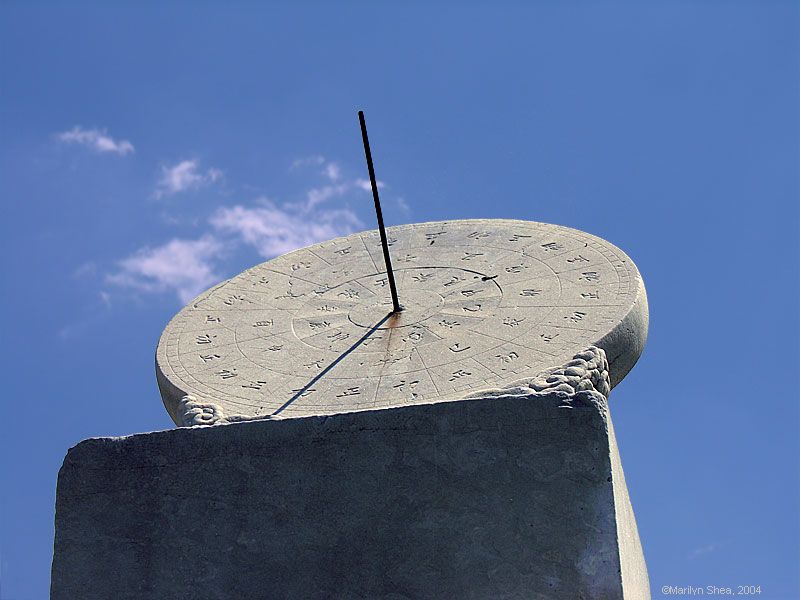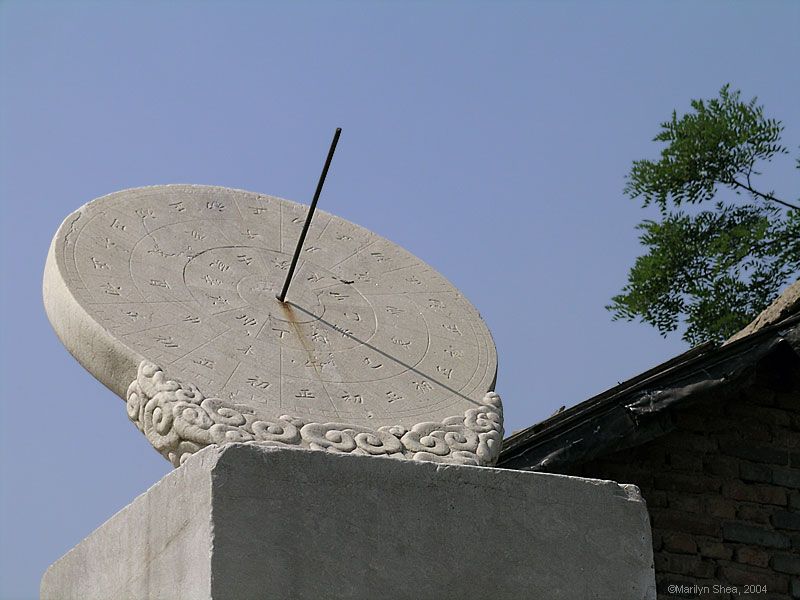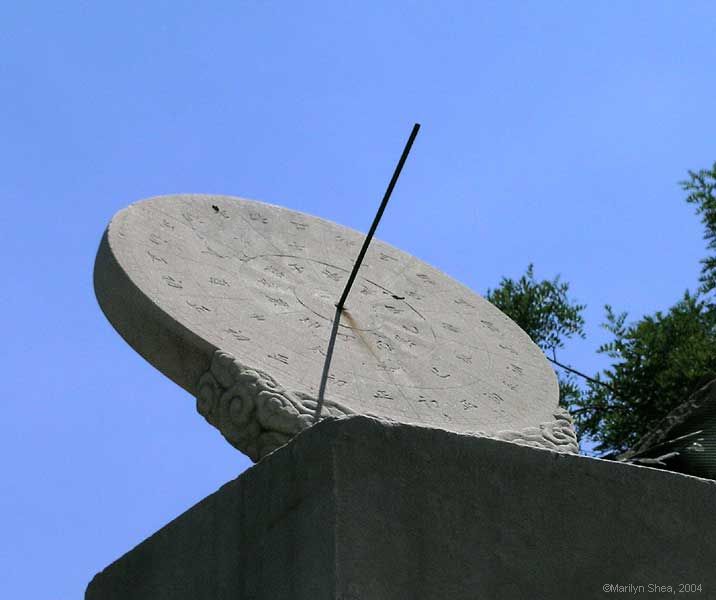| The sundial 日晷 rìguǐ is a specialized gnomon. The shaft is actually called a gnomon. The examples on this page are equatorial sundials, meaning they are aligned with the equatorial plane. The dial will be higher in the south celestial pole and lower in the north celestial pole. You read the upper part of the dial in the summer (from the vernal equinox to the autumn equinox) and the lower part of the dial in the winter (from the autumn equinox to the vernal equinox). The equinox is defined as that point at which the sun's path or ecliptic crosses the equatorial plane of the earth. When that happens you can't really tell time from the sundial. Another difficulty with sundials is shown in the picture below of the sundial at the Palace Museum at the Forbidden City. When it rains, you might as well take the day off if you are the Emperor's timekeeper. That gave rise to the urge to invent clepsydra and other types of predictable clocks. They could be checked and set by the sundial when the need arose. The astronomer in the court would also take exact star readings at night to provide accurate checks on the "mechanical" clocks.
Both sundials date from the Ming Dynasty (1368-1644). One is located at the Ancient Observatory in Beijing and the one below stands in front of the Hall of Supreme Harmony as a symbol that the Emperor was the source of the standards of time. Timekeeping is an important government function in any culture. Time must be standard if it is to be of any use. In every Chinese city, the time was announced by soundings from Drum and Bell Towers. The drums would signal the changes of the guard through the night, sounding every two hours. They would muster troops at 3 in the morning. The bell would sound at dawn as it was quite a bit louder than the drums. The bell in Beijing could be heard for 20 kilometers.
|





